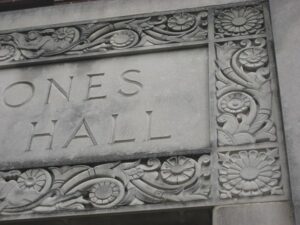The latest report by the National Student Clearinghouse Research Center shows that less than 32.7% of students who enrolled at public community colleges in 2017 completed a degree there. Another 7.7% completed their studies at a four-year institution. 3% completed their degree at another two-year institution, and slightly more than 11% remain enrolled but have not completed a degree. That leaves more than 45% of students who are no longer enrolled, did not graduate, and did not transfer elsewhere.
Increasing the completion rate is the age-old question for community colleges. According to a NIH study of college completion rates among high school graduates in 1972, the community college completion rate was 31.2%. That’s not much positive movement in 50 years.
A community college is a major investment by the community that hosts it. We should expect that the community college prioritizes student retention and assistance in completing students’ educational goals – whether that’s a degree at that institution, or a successful transfer to another institution. It’s fair to point out that some students who enroll in community college courses do so with no intention of seeking a degree. That’s fine, but there should be some way to distinguish these students statistically from those who have a more focused educational plan.
Community colleges offer notoriously poor advising to their students. This is unfortunate because community college students need solid advising than any other college student. Community colleges have a high proportion of first-generation students, non-traditional students, and minority students, all of whom are statistically more likely to have difficulty navigating course selection and course registration, course substitutions, credit transfer options, financial aid, and student support services. Layered on top of these are the challenges that non-traditional students face balancing school, work and family responsibilities.
Community colleges have much more work to do
Community colleges need to do a better job of retaining students and helping them navigate the challenges they face in achieving their academic goals. That requires more effort, better application of technology, better and more consistent contact with students, better monitoring of their academic progress, and better identification of challenges these students may encounter during the semester.
The other area in which community colleges must do a better job is ensuring that students who intend to transfer can actually do that. The latest statistics show that fewer than 8% of community college students successfully transferred to and graduated from a four-year institution. That’s almost inexcusable. It means that the transfer pathway for students is either not viable or that community colleges do not prepare transfer students for university-level work when they arrive on campus. Under these circumstances, promoting community college as a starting point for a four-year degree is little more than selling most students a bill of goods.
It is incumbent upon our elected trustees -who have the responsibility of guarding the public investment – to insist that the community college administration do more for and do better by our students. It is very clear that there is much to be done at the community college level to better support students. So, wasting money intended for our students on things like a quasi-private health club, unnecessary buildings, and lavish executive hirings is not guarding the public investment in education.
Photo Credit: Governor Jay Inslee, via Flickr








































